Abstract
OBJECTIVES: This study examined, across three racial/ethnic groups, how the inclusion of data on drug use of dropouts can alter estimates of adolescent drug use rates. METHODS: Self-report rates of lifetime prevalence and use in the previous 30 days were obtained from Mexican American, White non-Hispanic, and Native American student (n = 738) and dropouts (n = 774). Rates for the age cohort (students and dropouts) were estimated with a weighted correction formula. RESULTS: Rates of use reported by dropouts were 1.2 to 6.4 times higher than those reported by students. Corrected rates resulted in changes in relative rates of use by different ethnic groups. CONCLUSIONS: When only in-school data are available, errors in estimating drug use among groups with high rates of school dropout can be substantial. Correction of student-based data to include drug use of dropouts leads to important changes in estimated levels of drug use and alters estimates of the relative rates of use for racial/ethnic minority groups with high dropout rates.
Full text
PDF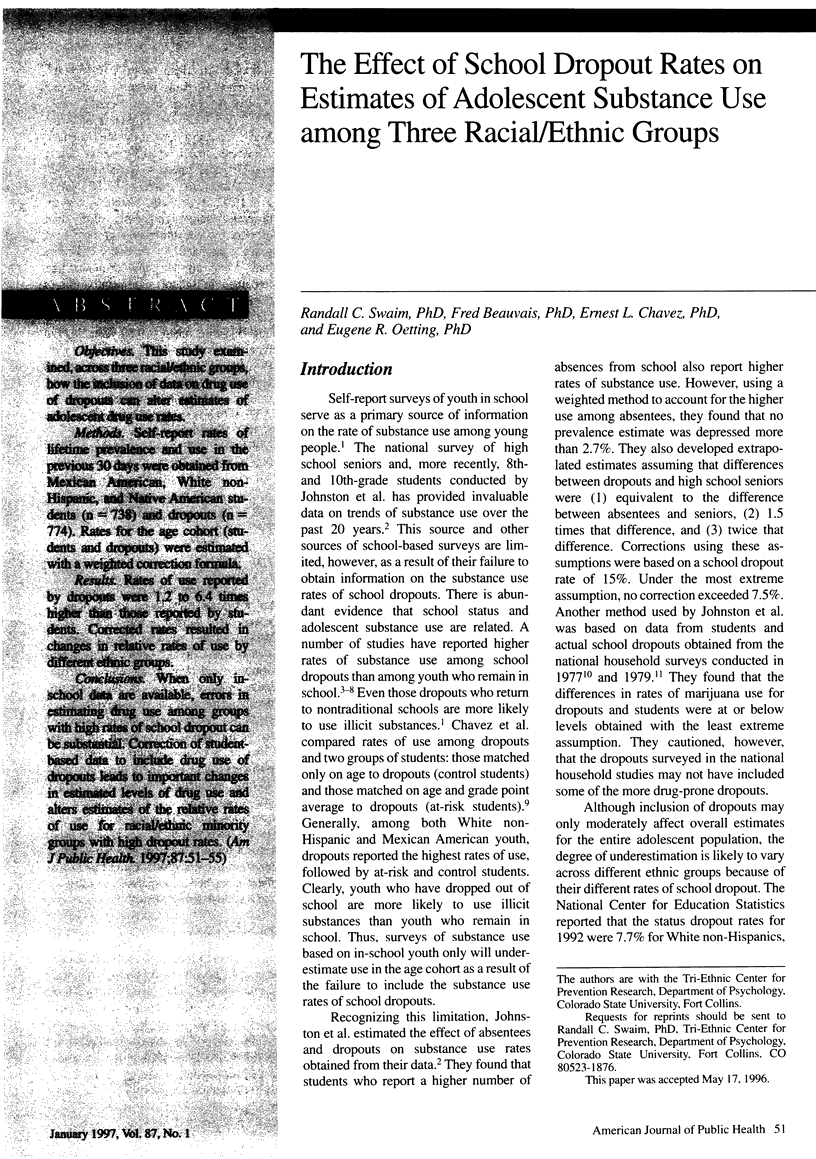
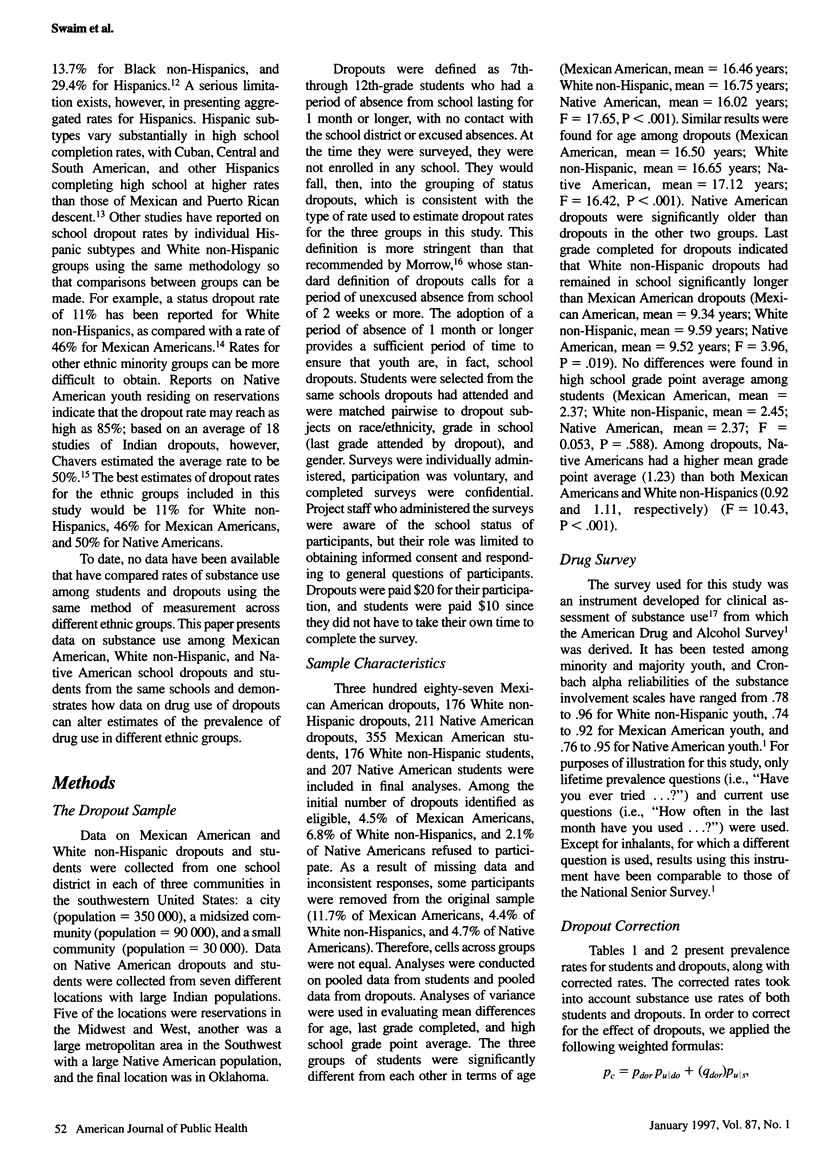
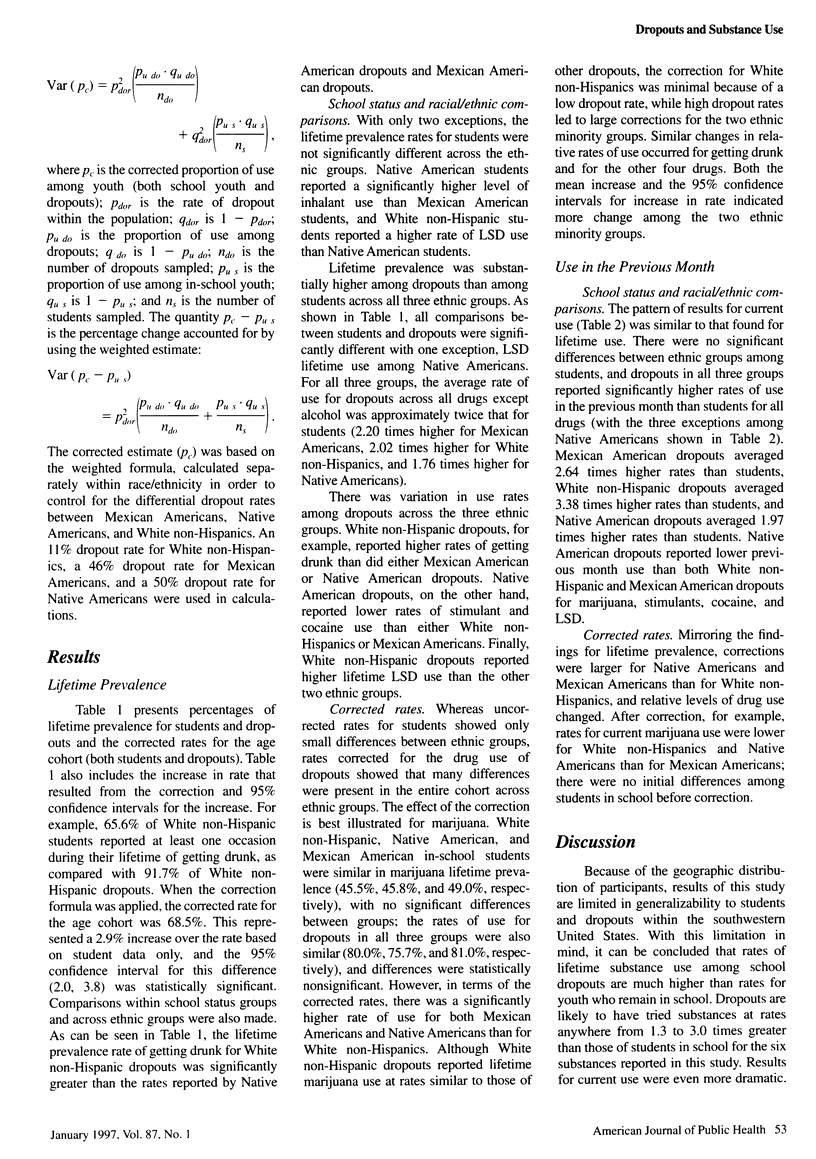
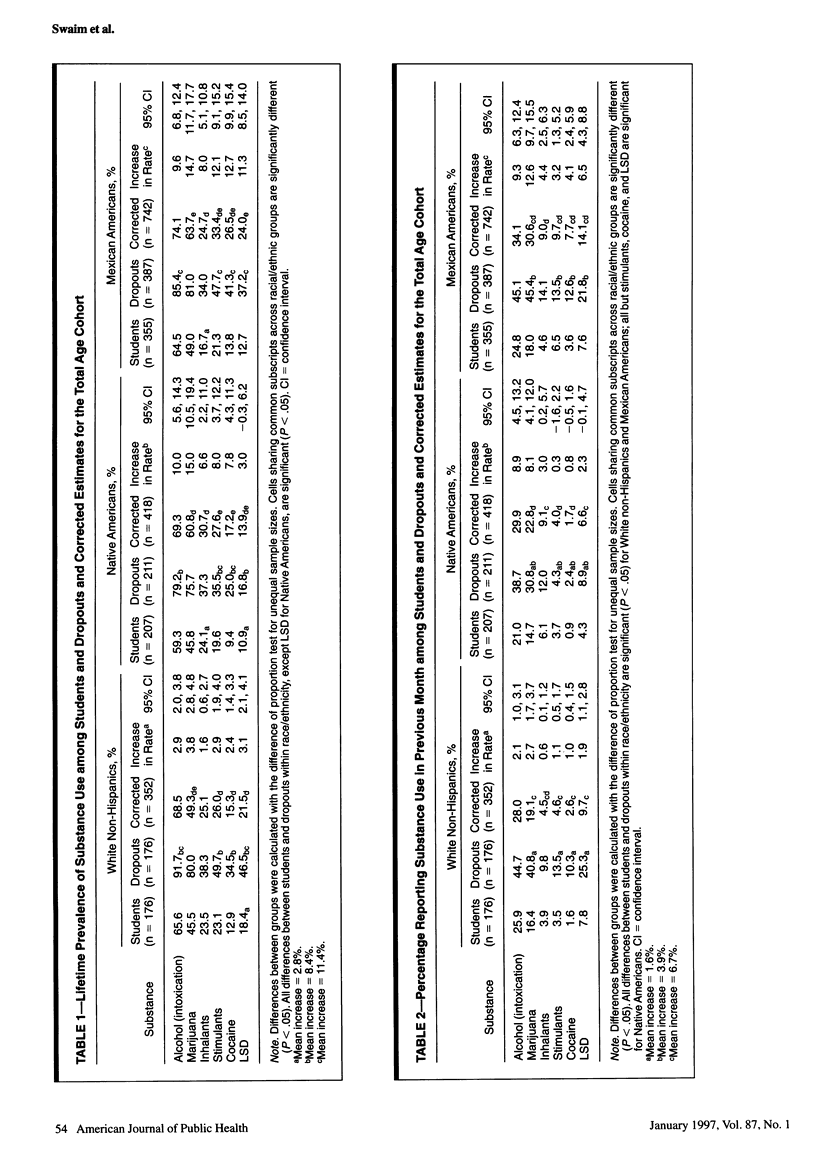
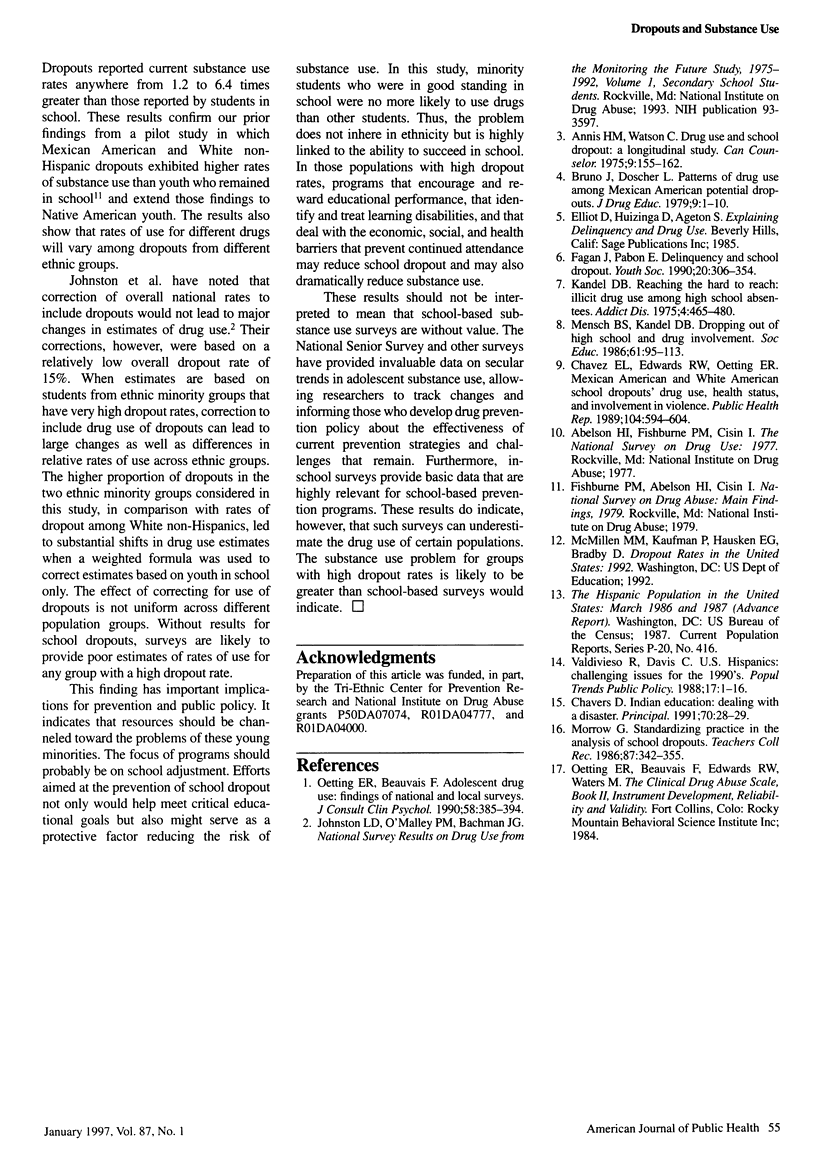
Selected References
These references are in PubMed. This may not be the complete list of references from this article.
- Chavez E. L., Edwards R., Oetting E. R. Mexican American and white American school dropouts' drug use, health status, and involvement in violence. Public Health Rep. 1989 Nov-Dec;104(6):594–604. [PMC free article] [PubMed] [Google Scholar]
- Kandel D. Reaching the hard-to-reach: illicit drug use among high school absentees. Addict Dis. 1975;1(4):465–480. [PubMed] [Google Scholar]
- Oetting E. R., Beauvais F. Adolescent drug use: findings of national and local surveys. J Consult Clin Psychol. 1990 Aug;58(4):385–394. doi: 10.1037//0022-006x.58.4.385. [DOI] [PubMed] [Google Scholar]
- Valdivieso R., Davis C. U.S. Hispanics: challenging issues for the 1990s. Popul Trends Public Policy. 1988 Dec;(17):1–16. [PubMed] [Google Scholar]


